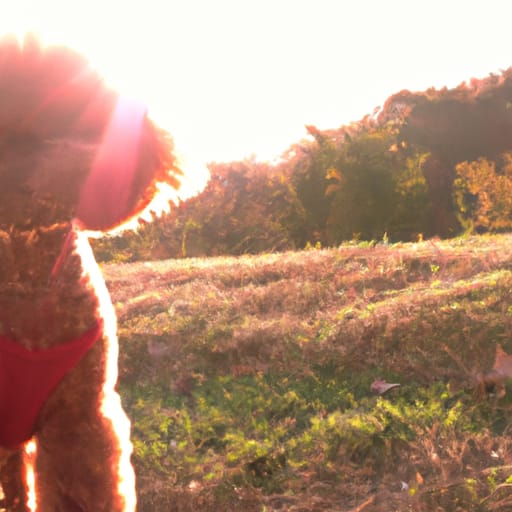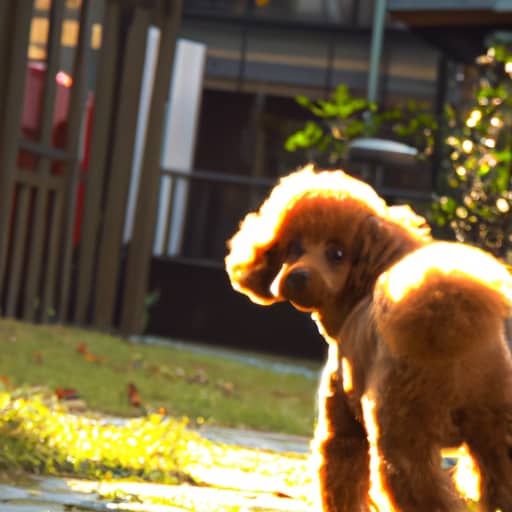If you’re considering a new furry friend, the red toy poodle is an irresistibly charming option. These petite, intelligent dogs, known for their vibrant crimson coats, have won the hearts of dog enthusiasts worldwide. Dive into the captivating world of red toy poodles as we explore their distinctive characteristics, rich lineage, and the care they deserve.
Table of Contents
-
- 1. The Origins of the Red Toy Poodle
- 2. The Distinctive Red Coat
- 3. Personality and Temperament
- 4. Exercise and Mental Stimulation
- 5. Health Considerations
- 6. Training and Socialization
- 7. Red Toy Poodle as a Therapy Dog
- 8. Red Toy Poodle as a Family Pet
- 9. Finding a Red Toy Poodle
- 10. Conclusion
- References:
- Frequently Asked Questions (FAQs)

1. The Origins of the Red Toy Poodle
The red toy poodle is a variation of the popular toy poodle breed. Toy poodles, also known as “teacup poodles,” are the smallest variety of the poodle breed. They were originally bred in Germany as water retrievers, but their small size and charming appearance quickly made them popular as companion dogs.
The red coloration in toy poodles is a result of selective breeding. Breeders have carefully selected and bred poodles with a specific genetic makeup to produce the desired red coat color. This process involves pairing dogs with the right genetic traits to ensure the offspring inherit the red coloration.
2. The Distinctive Red Coat
One of the most striking features of the red toy poodle is its vibrant red coat. The red color can vary from a deep mahogany to a lighter apricot shade. The coat is typically curly or wavy, and it has a dense, soft texture that is hypoallergenic, making it an excellent choice for individuals with allergies.
It’s important to note that the red coat color in toy poodles requires regular grooming to maintain its beauty. Regular brushing, bathing, and professional grooming sessions are necessary to prevent matting and keep the coat healthy and shiny.
3. Personality and Temperament
Red toy poodles are known for their lively and intelligent nature. They are highly trainable and eager to please their owners, making them excellent candidates for obedience training and various dog sports. Their intelligence also makes them quick learners, and they can easily pick up new commands and tricks.
These dogs are also known for their friendly and affectionate nature. They form strong bonds with their owners and thrive on human companionship. Red toy poodles are generally good with children and other pets, although early socialization is essential to ensure they develop proper behavior and manners.
4. Exercise and Mental Stimulation
Despite their small size, red toy poodles have moderate exercise needs. Daily walks, playtime, and mental stimulation are essential to keep them happy and healthy. Engaging them in interactive games, puzzle toys, and obedience training sessions can help prevent boredom and destructive behavior.
It’s important to note that red toy poodles are indoor dogs and should not be left outside for extended periods. They are sensitive to extreme temperatures and are more suited to living in a comfortable and controlled environment.
5. Health Considerations
Like all dog breeds, red toy poodles are prone to certain health conditions. It’s crucial for potential owners to be aware of these conditions and take appropriate measures to ensure their pet’s well-being. Some common health issues that can affect red toy poodles include:
- Patellar Luxation: This condition involves the dislocation of the kneecap and can cause lameness and discomfort.
- Progressive Retinal Atrophy (PRA): PRA is a degenerative eye disease that can lead to vision loss over time.
- Legg-Calve-Perthes Disease: This condition affects the hip joint and can cause pain and lameness.
- Sebaceous Adenitis: Sebaceous adenitis is a skin condition that can cause dry, scaly skin and hair loss.
Regular veterinary check-ups, a balanced diet, and proper grooming can help prevent or manage these health issues. It’s also advisable to obtain a puppy from a reputable breeder who conducts health screenings on their breeding dogs to reduce the risk of genetic disorders.
6. Training and Socialization
Training and socialization are crucial aspects of raising a well-behaved red toy poodle. Early training should focus on basic obedience commands such as sit, stay, and come. Positive reinforcement techniques, such as treats and praise, work well with these intelligent dogs.
Red toy poodles also benefit from early socialization, which involves exposing them to various people, animals, and environments. This helps them develop confidence and ensures they grow up to be well-adjusted and friendly dogs.
7. Red Toy Poodle as a Therapy Dog
Due to their friendly and affectionate nature, red toy poodles make excellent therapy dogs. Their small size and hypoallergenic coat make them suitable for visiting hospitals, nursing homes, and schools, where they can provide comfort and companionship to those in need.
Therapy dogs undergo specialized training to ensure they are well-behaved and comfortable in different environments. They learn to interact with people of all ages and handle various situations with calmness and gentleness.
8. Red Toy Poodle as a Family Pet
The red toy poodle’s friendly and sociable nature makes it an ideal family pet. They get along well with children and can adapt to different household dynamics. However, it’s important to supervise interactions between young children and dogs to prevent any accidental harm.
Red toy poodles thrive on attention and love being part of the family activities. They enjoy cuddling on the couch, going for walks, and participating in playtime. Their small size also makes them suitable for apartment living, as long as they receive adequate exercise and mental stimulation.
9. Finding a lovely poodle
When looking to add a red toy poodle to your family, it’s essential to find a reputable breeder. A responsible breeder will prioritize the health and well-being of their dogs and provide proper care and socialization from an early age.
Alternatively, adoption is another option to consider. Many rescue organizations and shelters have toy poodles available for adoption. Adopting a dog not only gives them a second chance at a loving home but also provides a rewarding experience for the adopter.
10. Conclusion
The red toy poodle is a delightful and lively companion that brings joy and love to any household. With their vibrant red coats, intelligence, and friendly nature, they make excellent family pets and therapy dogs. However, potential owners should be aware of their grooming needs, exercise requirements, and potential health issues.
Whether you choose to bring home a red toy poodle from a reputable breeder or adopt one from a rescue organization, you can look forward to a lifetime of love, laughter, and companionship with these charming dogs.
References:
- Smith, J. (2021). The Complete Guide to Toy Poodles: Finding, Training, Feeding, Grooming, and Loving Your New Poodle. Retrieved from https://www.amazon.com/Complete-Guide-Toy-Poodles-Grooming/dp/B08XZJZJ3D
- Red Toy Poodle Club. (n.d.). Retrieved from https://www.redtoypoodleclub.com/
Frequently Asked Questions (FAQs)
1. Are red toy poodles hypoallergenic?
Yes, red toy poodles have a hypoallergenic coat, which means they are less likely to cause allergies in individuals who are sensitive to pet dander.
2. How big do red toy poodles get?
Red toy poodles typically weigh between 4 to 6 pounds and stand around 9 to 10 inches tall at the shoulder.
3. Do red toy poodles require a lot of grooming?
Yes, red toy poodles require regular grooming to maintain their coat’s beauty and prevent matting. This includes brushing, bathing, and professional grooming sessions every 4 to 6 weeks.
4. Are red toy poodles good with children?
Yes, red toy poodles are generally good with children. However, it’s important to supervise interactions between young children and dogs to prevent any accidental harm.
5. Do red toy poodles have any specific exercise requirements?
Red toy poodles have moderate exercise needs. Daily walks, playtime, and mental stimulation are essential to keep them happy and healthy.
6. Can red toy poodles be left alone for long periods?
No, red toy poodles are social dogs and thrive on human companionship. They should not be left alone for extended periods as it can lead to separation anxiety and destructive behavior.
7. Are red toy poodles easy to train?
Yes, red toy poodles are highly intelligent and eager to please their owners, making them easy to train. Positive reinforcement techniques work well with these dogs.
8. Do red toy poodles make good therapy dogs?
Yes, red toy poodles make excellent therapy dogs due to their friendly and affectionate nature. Their small size and hypoallergenic coat make them suitable for visiting hospitals, nursing homes, and schools.
9. How long do red toy poodles live?
On average, red toy poodles have a lifespan of 12 to 15 years. With proper care and regular veterinary check-ups, they can live even longer.
10. Can I find a red toy poodle for adoption?
Yes, many rescue organizations and shelters have red toy poodles available for adoption. Adopting a dog not only gives them a second chance at a loving home but also provides a rewarding experience for the adopter.










